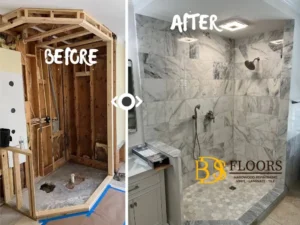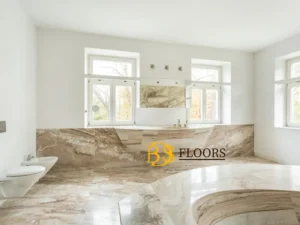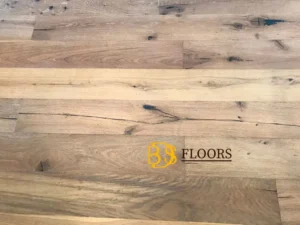Discover the differences between carpet and hardwood flooring to determine the optimal choice for your household’s flooring needs.
As you prepare to revamp your living room, dining room, or bedroom flooring, you’ll inevitably face the ongoing argument between hardwood floors and carpet, each with their own distinct advantages and disadvantages. Whether you’re aiming to boost your home’s value with a renovation or simply updating the aesthetic to your liking, it’s crucial to take into account factors such as appearance, texture, upkeep demands, and expense when weighing the pros and cons of carpet versus hardwood.
Choosing between carpet and hardwood flooring can be a challenging decision, as it largely hinges on your individual tastes. However, by taking the necessary time to thoughtfully examine the distinctions between these two flooring options, you can determine which factors are most crucial for your household. Explore this comprehensive breakdown of the primary advantages and disadvantages of each flooring type to make an informed decision for your upcoming home renovation project.
The biggest difference between carpet and hardwood flooring is the look and feel underfoot.
Before delving into the various cost, insulation, and safety considerations, it’s important to acknowledge that the most significant distinctions between carpet and hardwood flooring are their textures and appearances. Carpet comes in an extensive array of hues and textures, offering a broad range of choices that can complement almost any home decor. Whether you prefer subtle shades or bold, solid-color options or blends that can effectively conceal dirt and dust, carpet can suit your preferences. Additionally, carpet patterns and mosaics can serve as both a floor covering and a room focal point. Carpet is also significantly softer and more comfortable underfoot compared to hardwood, making it a popular choice for bedroom flooring.
In contrast, hardwood is sturdy and firm underfoot, but its primary allure lies in its aesthetic appeal. With a wide range of wood tones, colors, and grain patterns to choose from, you can select the hardwood flooring that best matches your preferences. It’s worth noting that while carpet is more comfortable, hardwood flooring works better with radiant floor heating systems as it conducts heat more efficiently. While carpet provides insulation and acts as a barrier, slowing down the transmission of heat from the heating system, installing a radiant floor heating system can help alleviate the issue of cold hardwood flooring.

Flooring options are an important consideration when renovating your living room, dining room, or bedroom. Carpet and hardwood are popular options, each with their own advantages and disadvantages. When making a decision, it’s important to think about appearance, comfort, maintenance, and cost.
Carpet and hardwood are different in terms of their look and feel underfoot. Carpet comes in a variety of colors, textures, and patterns to suit any home. It is softer and more comfortable than hardwood, making it a popular choice for bedrooms. Hardwood, on the other hand, is solid and firm and comes in a variety of wood tones, colors, and patterns.
Hardwood is better suited for use with radiant floor heating systems because it conducts heat better. Carpet, however, insulates the floor and slows the transmission of heat. While carpet may be more comfortable, hardwood provides better resale value.
When deciding between carpet and hardwood, consider the differences between the two options to determine which is the best choice for your renovation project.
Prospective home buyers and real estate agents usually prefer homes with hardwood floors over those with old carpeting. While replacing old carpet with new carpet may not necessarily harm the home’s appeal, selling a home with old carpeting can be a challenging task. On the other hand, installing new hardwood floors can significantly enhance the home’s appeal and increase its resale value. In fact, despite the higher initial cost of hardwood flooring, one can expect a return on investment of 70 to 80 percent on average after installing new hardwood floors.
The primary advantage of hardwood flooring is its attractive appearance and the various wood tones, colors, and wood-grain patterns available. Although hardwood is less comfortable than carpet, it’s a better option when combined with a radiant floor heating system because it conducts heat more efficiently. Carpet, on the other hand, insulates the floor and slows heat transmission from the heating system, making it a good option for reducing heat loss and sound transmission. If the main goal is to increase the resale value of the home, then hardwood flooring is the better choice as it provides better resale value compared to carpet.
Carpet costs less to install than hardwood.
Carpet installation is generally less expensive than hardwood flooring. Although hardwood is visually appealing and simple to clean with basic tools, its upfront cost is higher than that of carpet. The average cost of hardwood flooring ranges from $6 to $12 per square foot, depending on factors like wood type, color, grain, and quality. To cover a 144-square-foot room with hardwood flooring, you would spend between $864 and $1,728 on materials alone. Additionally, hiring a professional to install the hardwood can cost around $3 to $5 per square foot.
Carpet is a more affordable option in terms of both material and installation costs compared to hardwood. The average price of carpet per square foot ranges from $2 to $7, which means that you would pay around $288 to $1,008 to carpet a 144-square-foot room. If you prefer to have a professional install the carpet, expect to pay between $788 and $2,797. However, it is important to note that while carpet may be cheaper upfront, hardwood flooring still provides better resale value.
Hardwood flooring is more durable and lasts longer than carpeting.
When making a decision between carpet and hardwood flooring, it is important to consider the durability and lifespan of the flooring. Although carpet is a cheaper option initially, it will need to be replaced every 10 to 20 years to maintain its appearance. On the other hand, hardwood flooring is highly durable and can last for more than 50 years with proper maintenance. While spills and other messes will still need to be cleaned up promptly, hardwood flooring is a longer-lasting option than carpet.
Although the cleaning processes for carpet and hardwood flooring are different, both can be relatively easy to clean. Sweeping or vacuuming can quickly remove dust, hair, and debris from both surfaces. However, spills on carpeted floors can be challenging to clean as liquids and sticky solids can seep into the fibers, making it difficult to remove entirely. Hardwood floors are easier to clean in this situation as spills can be wiped up quickly with a cloth, towel, or mop.
For individuals with allergies, hardwood flooring is a better option than carpet as it is easier to clean and remove dust, dirt, and other allergens. In contrast, carpet fibers can trap allergens, making it difficult to remove them entirely, even with regular vacuuming. While hardwood floors can also spread allergens if not cleaned regularly, they are easier to clean than carpet.
Both carpet and hardwood are susceptible to heat and water damage, with hardwood being more vulnerable to water damage, and carpet more susceptible to fire and excessive heat. Ideally, it is best to keep both surfaces away from heat and water to prevent damage.
Carpeted floors provide better safety and sound absorption than hardwood, making them more comfortable to step on and reducing sound transmission through the floor. However, carpet is not a suitable option for those with allergies.
For individuals with allergies, hardwood flooring is a more suitable option than carpeting. The intricate design of carpet makes it challenging to thoroughly eliminate dust, dirt, pet hair, dander, and other allergens that may have accumulated in the tightly woven fibers. Even with frequent vacuuming, these substances can remain embedded in the carpet fibers, necessitating deep cleaning to eradicate them completely.
In contrast, hardwood flooring is a superior choice for families with allergy concerns as pet hair, dust, and other allergens are easy to sweep or mop away. However, the drawback of hardwood flooring is that allergens, such as pet hair, can become airborne again once they settle on the floor. Therefore, regular cleaning is crucial to prevent the spread of dust, dander, and pet hair throughout the house.
Both carpet and hardwood are susceptible to heat and water damage.
Whether you’re considering carpet or hardwood flooring, both can be affected by heat and water damage. Burning, rotting, swelling, and mold growth are all risks for both types of flooring. While hardwood floors often show visible damage more easily, you may feel the effects of damage on a carpeted floor when walking on it barefoot.
Carpet is generally more susceptible to fire and heat damage than hardwood because its fibers have a lower burning point. This means that carpet is more likely to catch fire before hardwood, and burns on carpet can be more severe than on hardwood. Water damage can be more harmful to hardwood than carpet because it can cause warping, swelling, and cracking. However, carpet is not necessarily better at handling water damage because it can mask any harm done to the underlying wooden structure and beams.
Choosing between hardwood and carpeted floors for a bedroom can be an easy decision for many people, as carpeting provides a more comfortable and warmer surface to step on, especially during cold nights. In addition to its insulating qualities, dense carpeting also acts as a sound insulator, reducing the transmission of sound through the floor.
Pet owners may prefer carpeted floors and stairs as they provide quieter footsteps for their pets, while parents can rest assured that a fall on a carpeted floor is less likely to result in injury than on a hard surface. However, it should be noted that carpeted flooring may not be the best choice for those with allergies, despite its insulating and safety benefits, due to its tendency to trap allergens.







